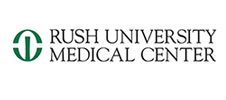Scapulothoracic Bursectomy
The scapulothoracic articulation is a critical component of normal shoulder function. The convex chest wall and concave anterior scapula typically form a congruent articulation that is able to glide smoothly on the interposed muscular and bursal layers. Though uncommon, abnormalities within this articulation can result in pain or mechanical symptoms. These disorders range from mildly symptomatic, intermittent bursitis to recalcitrant crepitus that may result in considerable pain and disability in some circumstances.
Disorders of the scapulothoracic articulation can be characterized based on etiology. When no mechanical symptoms are present, the pain is likely due to an overuse syndrome resulting in symptomatic bursitis. This is frequently seen in young active patients and overhead athletes. By contrast, the presence of mechanical symptoms may indicate the presence of abnormal bony or soft-tissue morphology within the scapulothoracic articulation. Repeated impingement of these structural irregularities often results in concomitant inflammation, bursitis, and scapular snapping.
Literature supports initial nonoperative management regardless of the etiology of the scapulothoracic pain. It is recognized, however, that bursitis occurring in the absence of an anatomic lesion responds more favorably to nonoperative management than when an anatomic lesion can be identified. When symptoms do not respond to nonsurgical measures or in the presence of structural abnormalities, surgical intervention is often necessary. Open techniques have historically resulted in substantial symptomatic relief. However, release of muscular insertions from the scapula can result in considerable morbidity and may slow rehabilitation.
Recently, arthroscopic techniques have been developed to minimize surgical morbidity, improve cosmesis, and accelerate rehabilitation. An understanding of the arthroscopic anatomy is critical to avoid the numerous neurovascular structures in this area, yet it is unfamiliar to many surgeons. There are also few clinical reports available to gauge the efficacy of an arthroscopic technique. Dr. Garcia is fellowship trained in this surgical technique, for consultation please use the appointment link on his website or contact his office.


















